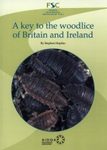About this book
Reprinted from Hydrobiologia.
This volume is a collection of papers concerning the biology of large branchiopod crustaceans: Anostraca, Conchostraca, and Notostraca. Many of the individual papers were first presented at the Third International Large Branchiopod Symposium (ILBS-3) held at the University of San Diego, CA, USA, July 15-18, 1996.
Contents
Regional Faunas and Community Assemblages. 6. Distribution, Diversity and Conservation of Anostraca (Crustacea: Branchiopoda) in Southern Africa; M.L. Hamer, L. Brendonck. 18. Distribution and Phenology of Large Branchiopods in Austria; E. Eder, et al. 3. Community Structure of Branchiopods (Anostraca, Notostraca, and Conchostraca) in the Banat Province in Yugoslavia; B. Petrov, D.M. Cvetkovic. 2. The Status of Anostraca, Notostraca, and Conchostraca in Yugoslavia; B. Petrov, I. Petrov. 13. On the Presence of the genus Branchipus Schaeffer, 1766 (Crustacea: Anostraca) in Macedonia; S. Petkovski. 19. Large Branchiopod Assemblages Common to Mexico and the United States; A.M. Maeda-Martinez, et al. 10. New Records of Large Branchiopods (Branchiopoda: Anostraca, Notostraca, Spinicaudata, and Laevicaudata) in Mexico; A.M. Maeda-Martinez, et al. 1. Large Branchiopod Crustacea (Anostraca, Notostraca, Spinicaudata) of the Barents Region of Russia; N.V. Vekhoff. 12. New Records and Observations on the Anostracan Genus Eubranchipus in California; R.E. Hill, et al. Taxonomy and Systematics. 16. On Potentials and Relevance of the Use of Copulatory Structures in Anostracan Taxonomy; L. Brendonck, D. Belk. 17. Branchinella madurai Raj (Crustacea, Branchiopoda, Anostraca) Shown by New Evidence to be a Valid Species; L. Brendonck, D. Belk. 30. Chirocephalus ponticus n. sp. (Crustacea: Anostraca) and its Affinities to the Other Turkish Species of the Genus; L. Beldjal, J. Mertens. 11. Tertiary Envelope Characters Useful for Typifying California Anostraca; R.E. Hill, W.D. Shepard. Genetics and Evolution. 14. Reproductive Isolation and Genetic Differentiation in North American Species of Triops (Crustacea: Branchiopoda: Notostraca); C. Sassaman, et al. 25. Population Genetic Structure of a California Endemic Branchiopod, Branchinecta sandiegonensis; C. Davies, et al. 9. Extraction of DNA from Anostracan Cysts (Crustacea, Branchiopoda) for Use in RAPD-PCR Analysis; J.A. Moorad, et al. 28. Gynandromorphism in Anostraca: Multiple Mechanisms of Origin? C. Sassaman, M. Fugate. 27. Anatomical Evidence for Androdioecy in the Clam Shrimp Eulimnadia texana; N. Zucker, et al. Ecology. 20. Horizontal Distribution and Abundance of Cysts of Several Large Branchiopods in Temporary Pool and Ditch Sediments; A. Thiery. 8. Notes on the Life History of the Clam Shrimp Eulimnadia texana; S.C. Weeks, V. Marcus. 23. The Resilience of Anostracan Cysts to Fire; M. Wells, et al. 31. Anostracans in Dark Sections of Saudi Arabian Caves; D. Belk, W.D. Peters. 15. Feeding Strategy of Two Sympatric Anostraca Species (Crustacea); L. Beladjal, et al. 7. The Effects of Pond Duration on the Life History Traits of an Ephemeral Pond Crustacean Eulimnadia texana; V. Marcus, S.C. Weeks. Aquaculture. 4. The Chitin Content of Some Anostracan Species; H.M. Cauchie, et al. 5. Evaluation of the Fatty Acid Profiles of Two Fairy Shrimp Species, Branchipus pasai Cottarelli, 1969 and Chirocephalus.
Customer Reviews















































